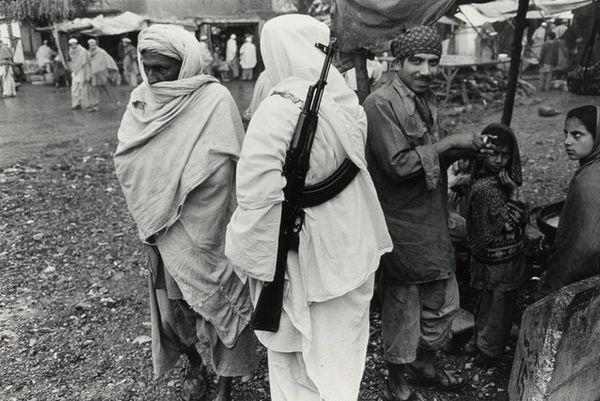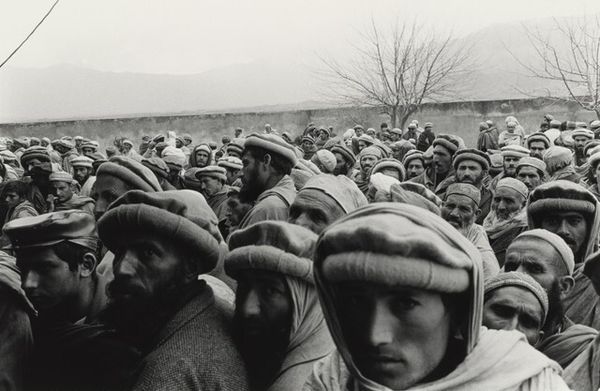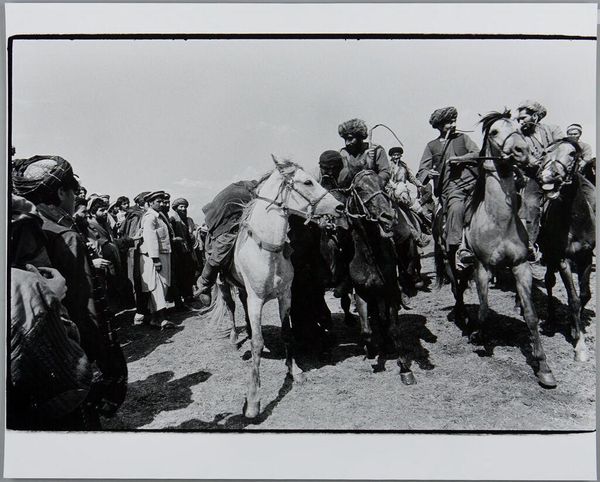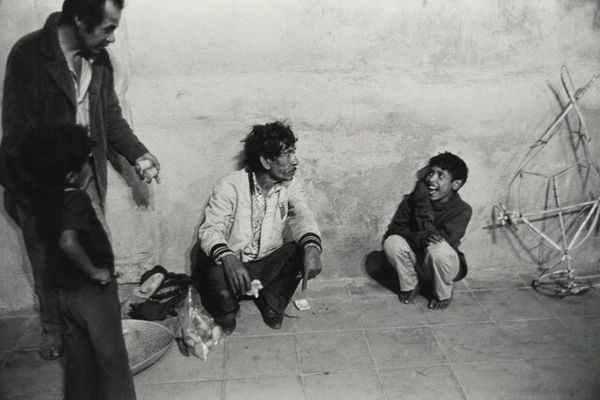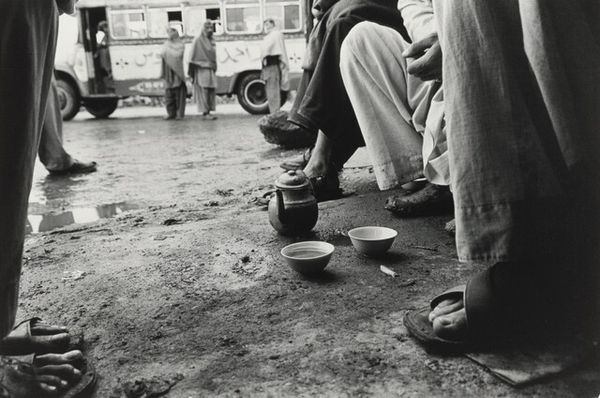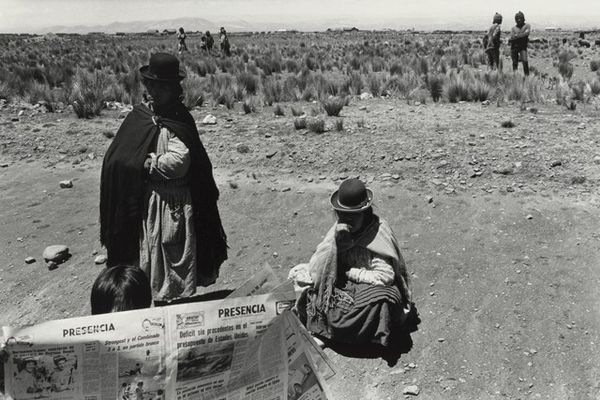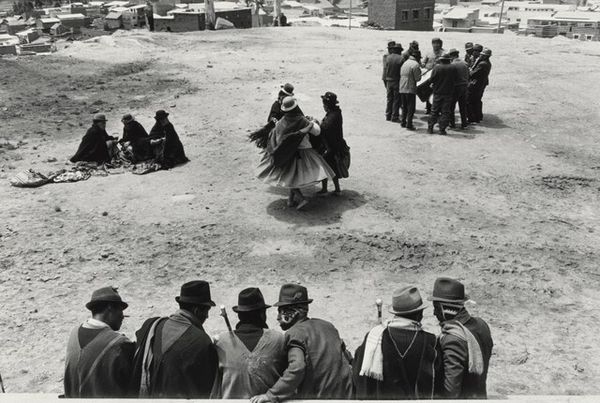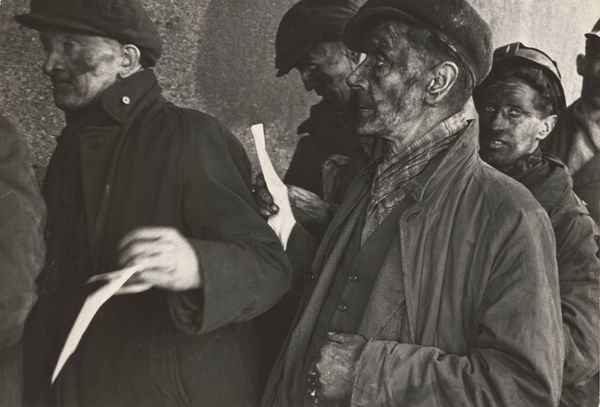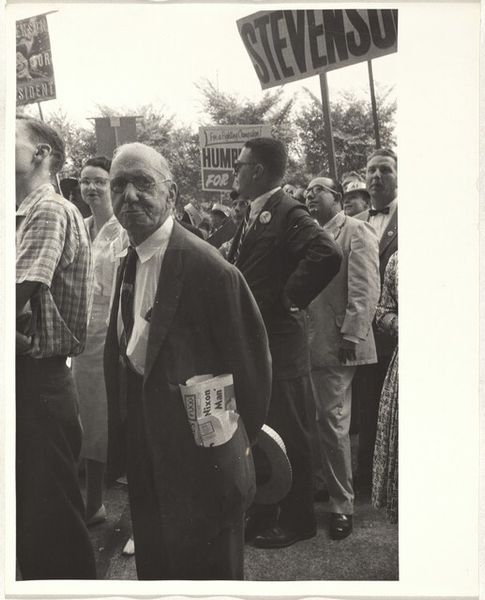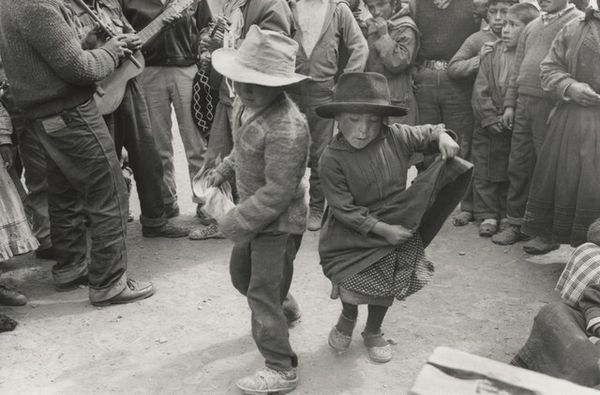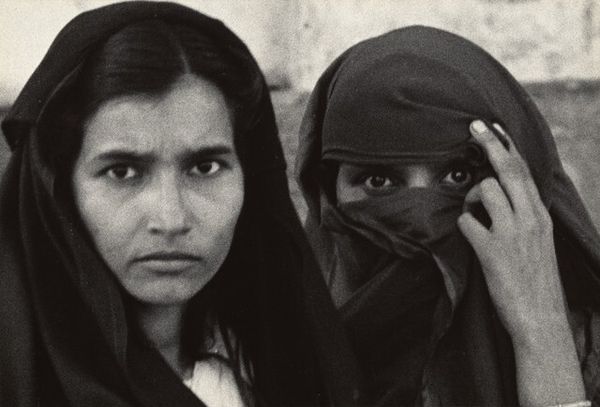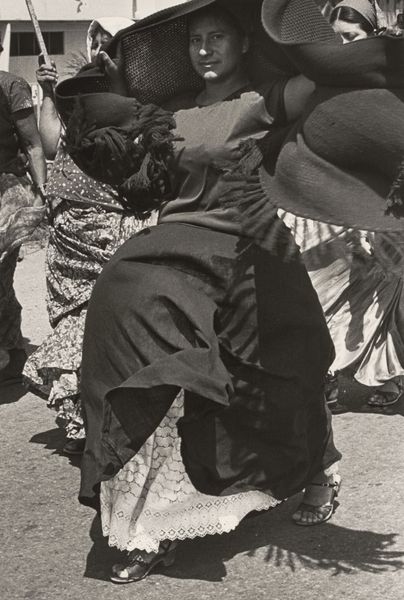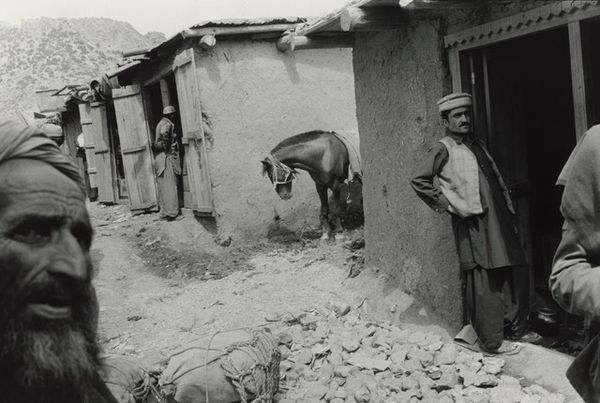
photography, gelatin-silver-print
#
portrait
#
black and white photography
#
cool tone monochrome
#
centre frame
#
black and white format
#
monochrome colours
#
social-realism
#
street-photography
#
b w
#
photography
#
black and white theme
#
black and white
#
gelatin-silver-print
#
monochrome photography
#
monochrome
Dimensions: image: 26 × 39 cm (10 1/4 × 15 3/8 in.) sheet: 35.56 × 43.18 cm (14 × 17 in.)
Copyright: National Gallery of Art: CC0 1.0
Editor: Here we have Ed Grazda’s black and white photograph, "AK-47, Jamrud, Pakistan" from 1980, printed as a gelatin silver print. It feels incredibly raw and immediate, like a slice of life captured on the spot. How do you see this piece? Curator: For me, the power lies in examining the materials present – the gelatin silver, the gun, even the cloth draped around these men. It pushes us to think about production. Where was the film manufactured? Under what labor conditions? What about the AK-47 – who produced it, who profited from it, and what geopolitical forces are at play that put that object in that man’s hands? It invites a whole systems analysis of global exchange. Editor: So, you are not focusing as much on the portrait itself, but thinking more about the...stuff surrounding it. Curator: Precisely! A photograph, especially one like this that seems to capture "real life," masks the sheer material reality that enables the image itself, the social and political contexts embedded within its every component. What kind of darkroom techniques were used? What does it mean that this image is a gelatin silver print, a relatively accessible medium at the time? Editor: I guess I never really considered all the hands that touched something seemingly so immediate! Thinking about the means of production opens up so many avenues for understanding the photo. Curator: Exactly. This photo isn’t just a depiction; it’s a material object born from a network of labor and exchange. Understanding the materials is understanding the deeper context. What do you make of it now, thinking about that exchange? Editor: Now I’m looking at it trying to trace the journey of everything within the frame: the gun, the clothes, the film… all the different layers of history embedded in each of them. Curator: And, what do we, as viewers, contribute to that economy through our engagement with it? Something to consider.
Comments
No comments
Be the first to comment and join the conversation on the ultimate creative platform.
